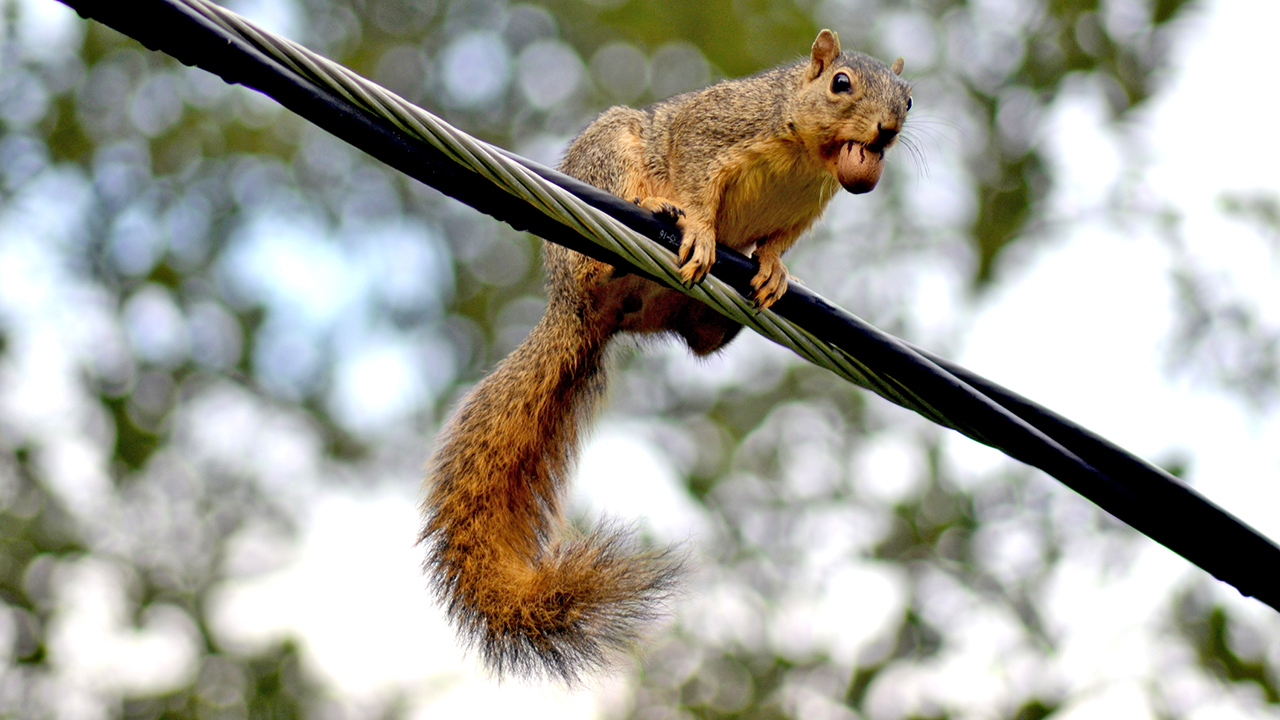Insights > Cows, Snakes, Birds, Bats, Beavers, ‘Coons; It’s a Jungle Out There for Power Reliability
Cows, Snakes, Birds, Bats, Beavers, ‘Coons; It’s a Jungle Out There for Power Reliability
04/17/2019

Power outages have many causes. Among them are falling trees, high winds, ice, equipment failure, cars running into poles and animals. Today, we’re going to talk about animals because, yes, we track these things.
In 2018, animals caused service interruptions to 60,004 Entergy Arkansas customers. That’s 4.8% percent of the 1,250,899 outages Entergy linemen restored in 2018.
What animals, you ask?
Let’s start with snakes. In 2018, 45 snakes slithered their way into an untimely demise. Snakes are often in pursuit of eggs laid by birds.
Birds like to build nests in our equipment, which can bridge gaps and gum up moving parts. The birds themselves rarely cause an outage directly, but now and then have been known to spread their wings and connect things that should not be connected. In one case, hundreds of blackbirds perched on an energized line weighed it down so much that it sagged into the neutral line below it. In 2018, 193 cases (4,012 outages) were attributed to birds.
Raccoons are frequent unwelcome intruders. They make their way into electrical equipment and, all too often, become a conductor between an energized line or piece of gear and a grounded component. In 2018, 160 raccoons caused 5,015 outages around the state.
Coming in at the undisputed No. 1 position is no surprise: squirrels. In 2018, 2,819 squirrels scampered into places they should not have gone, causing 38,811 outages.
There’s also a category for “other.” Other?
Cows, horses, and mules have caused more than a few outages. They like to scratch their backs, and apparently guy wires are handy back scratchers. A 1,000-pound cow pushing on a 35-foot wire can rock a pole pretty good. When the pole rocks, the wires bounce around and sometimes come into contact with one another, tripping a protective device and causing an outage.
Opossums, mice and rats were to blame for a few outages, as were a couple of tree frogs.
Beavers in both Prescott and Glenwood chewed down trees that then fell onto power lines.
Security lights draw bugs. Bugs die and pile up on transformers, causing outages.
In Dardenelle, a bat – probably chasing a bug – fluttered into a life-shortening situation.
In Wilson, a rabbit hopped onto an energized component. That was a new one on the serviceman who found the remains and repaired the damage. “I think I’ve been doing this too long,” he noted in the case log.
In one case, woodpeckers pecked a pole so persistently that the pole had to be replaced.
Solutions
Keeping animals out of electrical equipment is a constant battle. Some of our tactics are:
- Plastic or rubber covers built to fit over particular components, especially terminals where wires enter and exit from transformers.
- Insulated tape wrapped around bare wires in locations near other components.
- New designs are putting more space between energized equipment and grounds, reducing the risk of animals becoming a conductor.
- Fake owls posted on substation fences. Owls eat snakes and rodents, so they help deter the animals that we can fool. We move the owls around periodically to enhance the illusion that they’re real.
- Frisbee-size disks attached to power lines, serving as a barrier to squirrels making their way across a line into a substation.
- Flashy, shiny reflectors to deter birds.
- Fencing around substations. All substations have chain-link fences, mostly to keep people out. But in substations where other measures have been insufficient, the company will invest in Vanguard fencing, which is a barrier that stops all crawling animals, including snakes.

